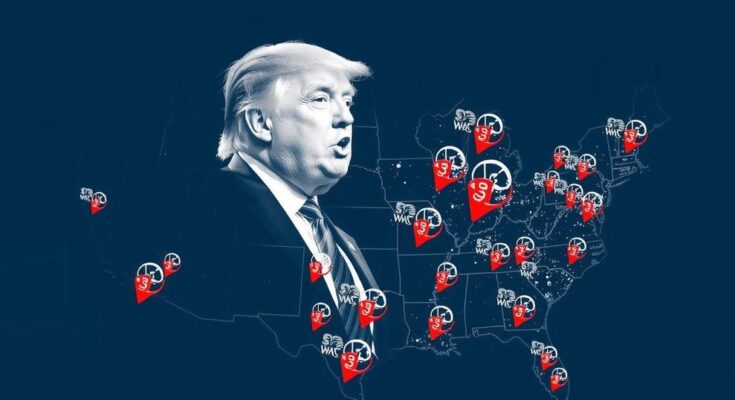Donald Trump’s proposed tariffs, tax reforms, and immigration policies are expected to impact the U.S. economy significantly, potentially reigniting inflation while creating uncertainty around growth. Economists predict a complex scenario where higher tariffs may reduce purchasing power, countered by potential tax reductions. Overall, a period of slower growth is expected, without triggering a recession, highlighting a challenging economic balancing act ahead.
As President-elect Donald Trump steps into the political ring again, his proposed policies on tariffs, taxes, and immigration loom large over the U.S. economy, casting shadows of uncertainty and potential inflation. Forecasters remain divided, pondering whether these strategies will invigorate economic growth or hinder it. While Trump’s intention to impose hefty tariffs could throttle consumer purchasing power, the anticipated tax cuts might offer temporary relief. Overall, the outlook points to a complex interplay of slowed growth rather than outright recession, as economists predict a modest turbulence ahead. Trump’s tariffs threaten to add 10% to 20% on imports and as much as 60% on Chinese goods. This bold move continues the theme from his earlier term, wherein tariffs were already levied on various imports, including vital sectors like steel and solar panels. Such measures traditionally lead to price hikes, as businesses offset increased costs, thereby creating a ripple effect felt across consumer goods. Analysts at Nomura adjusted their inflation forecasts upward, estimating inflation rates escalating to 3.1% by 2025, fueled particularly by these imports. Furthermore, the impact of these tariffs could reach $78 billion in reduced purchasing power for Americans, prompting a dip in economic growth amidst struggling households. As Trump eyes tax policy, he is likely to extend the 2017 Tax Cuts, benefiting both households and enterprises. This could lead to lower rates and bigger deductions for families, potentially stimulating some consumer spending. However, skepticism looms regarding extreme lowering of corporate rates and the reduction of social spending. The delicate balancing act of stimulating growth while curbing deficits underscores the uncertainty surrounding these fiscal maneuvers. However, benefits might trickle down only to higher-income households, known for their propensity to save rather than spend additional income. On immigration, Trump’s promised overhaul could significantly reduce migration rates, introducing rigorous measures that may yield economic consequences. With net migration expected to tumble from 1.1 million to 800,000 annually, the labor force could tighten, pushing inflation up once again. The ripple effects might stifle hiring and diminish foreign visitor spending, further crimping economic growth and dampening the recovery from pandemic-induced labor shortages. The economic horizon remains fraught with complexity. Nomura asserts that the consumer spending boost from tax relief will likely be modest while being counteracted by higher tariffs and stricter immigration policies. Meanwhile, rising inflation may compel the Federal Reserve to soften its stance, lowering rates gradually rather than aggressively. Balancing these factors leads forecasters to predict a deceleration in economic growth over the coming years, as Trump’s administration attempts to navigate through this tangled landscape.
The article delves into how President-elect Donald Trump’s policies may reshape the U.S. economy through proposed tariffs, tax reforms, and immigration restrictions. It outlines the potential pitfalls and benefits of these policies, presenting a landscape of contrasts where inflation could reignite, yet growth might not reach critical downturns. Economists analyze the ramifications on consumer spending, job markets, and fiscal health as they provide forecasts influenced by the political landscape of the new administration.
In summary, Trump’s anticipated policies hint at a turbulent economic landscape that promises both challenges and opportunities. While tariffs could pressure consumer spending and push inflation higher, tax cuts might offer a momentary reprieve. However, the potential for restrained growth is significant, particularly with immigration policies at play. As the economy prepares for slower growth rather than a steep downturn, balancing these intricacies in policymaking will be crucial for the new administration.
Original Source: www.usatoday.com



